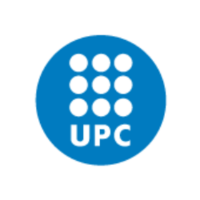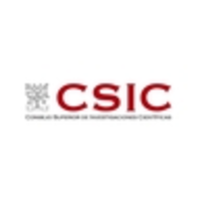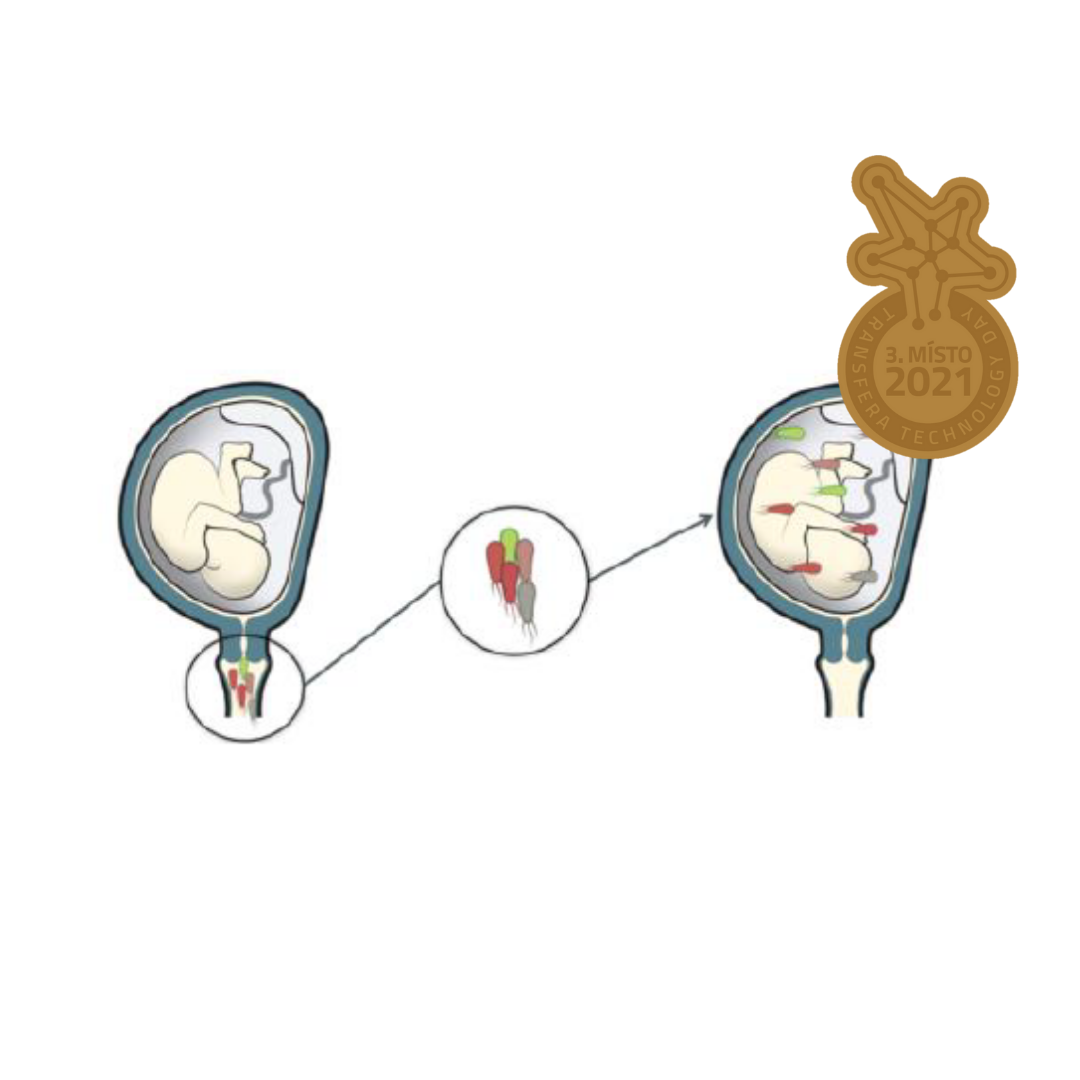Technology Offers Site map description
A
Universitat Politècnica de Catalunya - UPC posted this:
Automatic system for electroporation of adherent cells growing in standard multi-well platesAn electrode assembly for in vitro electroporation for adherent cells has been designed and patented by UPC and UB. The new system allows the electroporation in standard culture plates, achieving an enhanced and uniform electric field distribution across the biological sample monolayer and reducing the invasiveness of the operation. Partners to further develop the system and/or to establish commercial agreements along with technical cooperation are sought. Northeastern University's Center for Research InnovationNortheastern University's Center for Research InnovationNortheastern University's Center for Research Innovation
Northeastern University's Center for Research InnovationNortheastern University's Center for Research InnovationNortheastern University's Center for Research InnovationSmall and Medium Enterprise
Northeastern University's Center for Research Innovation posted this:
Automatic Tool for Scouring the Internet and Generating Names Linked to Illegal Activities to Facilitate Detection and Reporting of Suspicious ActivitiesFinancial institutions are actively required to track clients engaged in illegal/suspicious activities in order to understand their overall risk exposure. Such activities are currently performed manually. Moreover, there is a lack of suitable product(s)/technique(s) in the market for real time, adverse media scanning. Additionally, the currently used products/techniques are associated with many possible limitations such as limited name matching parameters, imprecise transaction filtering rules, presence of false positives, significant human interventions, and absence of appropriate platforms for information sharing. The invention discloses a novel system/method to facilitate detection and reporting of suspicious/illegal activities over the internet.Peter Mogyorosi posted this:
Automatic, universal, robot-controlled press brake tool change systemComplete press brake tool change system of robotically automated press brake cells. The bending tools are placed in a special tool magazine in the exact position next to the press brake. From there, the robot takes out the tools with the help of a gripper developed for this purpose and moves them in a vertical direction into the specially designed bending tool holder of the press brake, in a programmed position with high precision and quickly.
CEO at Laser Consult Ltd. Tech Transfer CIIMARCIIMAR - Interdisciplinary Centre of Marine and Environmental ResearchTech Transfer CIIMAR
Tech Transfer CIIMARCIIMAR - Interdisciplinary Centre of Marine and Environmental ResearchTech Transfer CIIMARBusiness Development Manager at CIIMAR - Interdisciplinary Centre of Marine and Environmental Research
View ProfileTech Transfer CIIMAR posted this:
Autonomous aquaculture fish feeding systemThis technology relates to an autonomous aquaculture fish feeding system that comprises an autonomous vessel with temperature and salinity sensors, designed for inland aquaculture facilities and tested with European seabass.
Business Development Manager at CIIMAR - Interdisciplinary Centre of Marine and Environmental ResearchUniversity of Huelva posted this:
AUTONOMOUS DETECTION AND SIGNALING CROSSWALK SYSTEMAutonomous device and system for vehicle detection and crosswalk signaling oriented to form a visual warning barrier especially applicable to the field of road safety. The system has several innovative features: 1) low cost, which makes possible real deployment on roads; 2) small size, which entails a minimal impact for both users and environment; 3) placed over the track, which does not require public works; 4) autonomous, so it does not require electrical wiring; 5) smart, so it interacts with pedestrians and vehicles. Tech Transfer CIIMARCIIMAR - Interdisciplinary Centre of Marine and Environmental ResearchTech Transfer CIIMAR
Tech Transfer CIIMARCIIMAR - Interdisciplinary Centre of Marine and Environmental ResearchTech Transfer CIIMARBusiness Development Manager at CIIMAR - Interdisciplinary Centre of Marine and Environmental Research
View ProfileTech Transfer CIIMAR posted this:
Autonomous device for capturing aquatic eDNAThe technology relates to the development of a low-cost in situ automatic bio-sample device that enables the collection and concentration of aquatic eDNA, particularly through filtration of plankton-rich water samples.
Business Development Manager at CIIMAR - Interdisciplinary Centre of Marine and Environmental ResearchCSIC - Consejo Superior de Investigaciones Científicas posted this:
Autonomous equipment for separation of seeds from soil samplesAutonomous equipment for separation of seeds from soil samples CSIC, through INIA-CSIC, has developed a device with application in research and studies on soil seed banks. It is a system for the autonomous separation of seeds from soil samples that increases the efficiency in the process of extracting seeds by washing and sieving, since, until now, said extraction has been carried out manually, being a long, cumbersome and susceptible to handling errors process. Companies from the agricultural, environmental sciences and ecology sectors interested in the development, manufacture and commercial exploitation of the device are sought An offer for Patent LicensingOXA Ltd posted this:
Autonomous Nanomotor Platform For CleanTech & BiomedOXA Ltd presents a novel nanomotor platform capable of autonomous motion, field-guided orientation, and active pollutant breakdown, all without external fuel or onboard electronics. This fully self-powered nanoscale system enables breakthrough use in fluid-based environments such as biomedical tissue, wastewater, and sealed microchannels. Key Highlights: - Operates autonomously in saline and similar media - Responsive to low-voltage external fields (no controller needed) - Functions under chlorinated or biologically complex conditions - Biocompatible and modular architecture - Patent-pending platform with cross-sector potential Primary Sectors: - Medical delivery & diagnostics - Water treatment & pollutant control - Consumer product enhancement - Microfluidics & advanced manufacturing The underlying method and configuration are protected by a filed provisional patent. Further technical info and IP documentation available under NDA.Universidad de Burgos posted this:
Autonomous vehicle for explosive detectionThe threat of improvised explosive devices (IEDs) in public spaces such as airports, transportation hubs, or logistics warehouses represents a growing risk to public safety. Many of these devices use TATP (triacetone triperoxide), a highly unstable and volatile homemade explosive. Unlike other conventional explosives, TATP does not contain nitro groups, which makes it difficult to detect using common technologies such as mass spectrometry, traditional chemical sensors, or even trained dogs. This limitation can create a gap in current surveillance systems, especially in environments where large-scale physical inspection is not feasible.In this context, a research group from the University of Burgos (UBU) has developed a portable technology that enables the selective detection of TATP in the air, offering an effective, more affordable, and non-invasive solution to enhance security in public spaces.
Knowledge Transfer Office at UNIVERSIDAD DE BURGOSUniversidad de Alicante posted this:
Autonomous vehicles for transport of materials in warehouseUniversity researchers have developed a low cost device that can be adapted to different types of vehicles, allowing the movement and transport of loads in complex spaces without the need for drivers. This system is ideal for transporting materials in warehouses where it is necessary to make a continuous passage of goods between different points. The technology, designed by researchers from the UA Research Group in Signals, Systems and Telecommunication, allows the vehicles to be programmed to travel independently, without human intervention, by mapping and pinpointing the area through various sensors such as laser and machine vision systems. This allows for the reconstruction of the area and the identification of possible moving objects. It also reckons the optimal path to reach a certain point, avoiding potential obstacles through reinforcement learning techniques. This technology presents several advantages. It organizes the information about the vehicle’s surroundings captured by several sensors. In this way, the vehicle location can be inferred by the form and position of the detected obstacles. The system operates in dynamic environments, and this allows it to work in places with free movement of persons. The technology can be installed in any kind of vehicle, new or used, without calibration needed.
B
University of Waterloo posted this:
Bacteria-responsive drug release platform for food packagingBackground Currently, 17% of the total global food production is wasted which is due in part to the short shelf-life of food products. Preservatives are used to prevent spoilage, improve appearance, and maintain the food’s nutritional quality; however, preservatives only prolong food shelf life and do not eliminate bacteria. By the time bacteria growth is detected it is too late, and the entire food product must be discarded. Furthermore, certain preservatives may have unwanted side effects. Designing better and smarter food packaging can help prolong the shelf-life and help dramatically reduce food spoilage and promote food sustainability.University Hospital Hradec Králové posted this:
Bacterial Detection in Amniotic FluidDetermination of the presence of specific bacteria in amniotic fluid collected by amniocentesis using multiple RT-PCR test. Preterm Premature Rupture of Membranes (PPROM) is a pregnancy complication. In this condition, the sac (amniotic membrane) surrounding the fetus breaks (ruptures) before week 37 of pregnancy. Once the sac breaks, pregnant woman has increased risk for infection. PPROM complicates 3 – 4% of all pregnancies and is up to 1/3 complicated by microbial invasion of the amniotic cavity (MIAC) leading to infection in amniotic fluid (AF) and development of intra-amniotic inflammation. Although this complication is usually asymptomatic, it is a major cause of preterm birth and neonatal morbidity and mortality worldwide. Neonates from these pregnancies are at increased risk of developing neonatal sepsis and impaired psychomotor development and other sometimes lifelong health consequences. Currently, determining the MIAC in patients with PPROM is very time-consuming and technically demanding. Main disadvantage is that results are available in days, which is already clinically irrelevant for the initiation of targeted antibiotic treatment. We have developed multiplex Real Time - PCR (Real - Time Polymerase Chain Reaction) assay for simultaneous detection of the most common targeted pathogens in AF collected by amniocentesis. The method will reduce the time required to diagnose specific pathogen and help clinicians make quick and accurate treatment decision. The assay consists of 3 panels for DNA detection of 8 most common microorganisms. Each panel contains specific sets of primers and probes. Assay results are determined by PCR fluorescence signal. Panels were validated retrospectively on 20 samples of AF of PPROM patients and have reached 90 % sensitivity so far. Further prospective validation study is currently underway. Advantages High sensitivity of the method - panel of selected microorganisms in multiplex assay was defined on the basis of research in nearly 700 patients with PPROM and it covers 88 % of microorganisms responsible for MIAC in PPROM patients. The multiplex approach determines the selected microbes in several hours after sampling in semi-quantitative way compare to the current approach (combination of specific multiplex Real Time - PCR for 3microorganisms in combination with PCR assay targeting 16S rRNA regions followed by Sagner sequencing for the rest of targeted microbes and cultivation techniques). Personalized approach to the clinical management and therapeutic intervention of the patients with PPROM based on the assay results. The technology does not require specialized laboratory equipment or specialized personnel and thus is suitable for molecular laboratory of perinatology centres equipped with standard Real-Time PCR cycler. Benemérita Universidad Autónoma de PueblaBenemérita Universidad Autónoma de PueblaBenemérita Universidad Autónoma de Puebla
Benemérita Universidad Autónoma de PueblaBenemérita Universidad Autónoma de PueblaBenemérita Universidad Autónoma de PueblaPublic Agency
Benemérita Universidad Autónoma de Puebla posted this:
Bacterial formulation by plant growthThe present invention includes a bacterial formulation that contains 6 different bacterial strains: Azospirillum brasilense Sp7, Burkholderia unamae MTI641, Pseudomonas putida KT2440, Sphingomonas sp. OF 178, Gluconoacetobacter diazotrophicus PAI 5 and Bradyrhizobium sp. MS22, able to promote the growth in plants of agricultural and/or bioremediation interest. The formulation promotes the growth of maize plants and other plants of agricultural interest. The bacteria of the present invention are adhered and may colonize the plants in a suitable manner by means of their own capacities.Benemérita Universidad Autónoma de Puebla posted this:
BACTERIAL FORMULATION FOR PLANT GROWTH.The present invention includes a bacterial formulation that contains 6 different bacterial strains: Azospirillum brasilense Sp7, Burkholderia unamae MTI641, Pseudomonas putida KT2440, Sphingomonas sp. OF 178, Gluconoacetobacter diazotrophicus PAI 5 and Bradyrhizobium sp. MS22, able to promote the growth in plants of agricultural and/or bioremediation interest. The formulation promotes the growth of maize plants and other plants of agricultural interest. The bacteria of the present invention are adhered and may colonize the plants in a suitable manner by means of their own capacities.CSIC - Consejo Superior de Investigaciones Científicas posted this:
Bacterial nanocellulose biomaterial productionThe CSIC has developed the production of an emerging nano-cellulose biomaterial from autotrophic bacteria, with growth from a single inorganic carbon source (eg atmospheric CO2), for use in biomedicine, food, packaging, and potentially in the production of biofuels. Industrial partners from the field of biotechnology, pharmaceutical, food, biofuel and packaging, are being sought to collaborate through a patent licence agreement.University Hospital Hradec Králové posted this:
Balance Belt - A safety and rehabilitation aid for training of standing up, balancing and walkingBackground As part of the rehabilitation and verticalization of seniors or patients with limited mobility or reduced stability, so-called walkers are used nowadays. The disadvantage of these walkers is that in some cases the user feels insecure and is afraid of falling, or the user isn't strong enough or doesn't feel strong enough to be able to stand or walk with support for hands only. Description of the invention The BalanceBelt consists of the seat, handles and strong elastic straps that can be attached to the high walker. It will enable the use of walkers even for people who, with standard walkers, would still need constant help from the nursing staff while standing or walking, either in the form of additional support or in the form of being ready to catch the patients in case of a fall. At the same time, it makes it easier for nursing staff to verticalize patients, for example when they need to get up to exercise with the help of a walker. The belt can be used separately to facilitate the manipulation with the patient (during transfers or bed exercises, when practicing sitting and standing up) or as part of a high walker for practicing walking. Advantages The combination of flexible and strong attachment of ropes or straps is used: · for standing up and balance training · for training transfers from bed (to wheelchair, high walker) · for walking (not only as support, but also as a stimulation) Balance Belt is intended for people with limited mobility and stability problems after injuries, surgery, neurological and other disorders. It allows patients to overcome the fear of standing and walking, allowing faster progress in therapy, reducing the risk of instability and falling. It also enables caregivers to have a firmer grip and facilitates, eventually replaces manual assistance, and improves the ergonomics of work. Potential use The device can be used in acute health care facilities (hospitals), aftercare facilities, rehabilitation institutions, social care institutions, retirement homes as well as in the home environment. The device can be easily used by both professional medical stuff or by average non-medical population.Robert DiSilvestro posted this:
Bariatric Meal Replacement LineGreat taste due to new discovery for sweetening protein beverages 27-28 g protein per serving More nutritionally complete than competing products Can often eliminate the need for some commonly used supplements More effective forms of some nutrients than competing products
Emeritus Professor, LLC PresidentMax-Planck-Innovation GmbH posted this:
Barodome: Arrangement of Barometric Sensors and Machine Learning Based Force Inference MethodWhen developing applications such as robots, sensing of forces applied on a robot hand or another part of a robot such as a leg or a manipulation device is crucial in giving robots increased capabilities to move around and manipulate objects. We offer a complete low-cost sensor solution with the sensor arrangement, production method, the neural network and its training method.Peter Mogyorosi posted this:
BAT - autonomous Batch Analytics plaTformBAT is an autonomous data driven forecasting platform for energy and utilities. This platform will provide utility companies machine learning models which improve efficiency in energy distribution and usage. It also increases the efficiency of the power generation equipment by quickly discovering and addressing underperforming elements. Our machine learning models prevent failures before they occur thus increasing uptime and reducing maintenance time and costs.
CEO at Laser Consult Ltd.Frame IPACE posted this:
Bathroom Fall Detection Device without CameraA privacy-first, contactless monitoring solution developed by Pontosense (SMK Partner), utilizing 60 GHz millimeter-wave (mmWave) RADAR technology combined with advanced AI algorithms. It's engineered to detect falls, monitor vital signs, and analyze movement patterns without the need for cameras, microphones, or wearable devices, thereby preserving user privacy.
International Business Development Specialist at Frame IPACEScott Inwood posted this:
Battery-free WiFi communication for IoT sensorsBackground Battery-free wireless communication devices/sensors are highly desirable for IoT applications, such as implantable body to farm field sensor monitoring applications. Traditional battery-free systems such as RFIDs, require a specialized reader to read the tag values. The high cost and large form factor of these readers have made them difficult to deploy and have limited the adoption of RFID tags over broad areas of applications. Battery-free WiFi systems have recently been developed using backscatter technology to transmit data using existing WiFi networks. However; these systems have several problems including compatibility with existing WiFi infrastructure and inability to work with secure networks which render them impractical to work with existing WiFi networks.
Director Commercialization at University of WaterlooCracow University of Technology posted this:
Beafire – simulating fire resistance of reinforced concrete beamsThe Beafire technology consists of an originally developed algorithm for finding fire resistance of reinforced concrete beams and a prototype of an engineering application based on it. The algorithm couples 1D mechanical modelling with 2D simulation of cross-section temperature distribution what makes it very efficient. The application consists of GUI and stimulation engine modules.CSIC - Consejo Superior de Investigaciones Científicas posted this:
Benzothiazole Derivatives as CK-1 Inhibitors for the Treatment of Amyotrophic Lateral Sclerosis CSIC has synthesized a family of benzothiazoles which acts as casein kinase 1 (CK-1) inhibitors. Therefore, these compounds are useful for the treatment of diseases related to circadian rhythm and neurodegenerative, inflammatory, autoimmune, neurological and psychiatric diseases where CK-1 is relevant. Furthermore, these compounds induce cell regeneration. Pharmaceutical companies interested in a patent licence are sought for.Brunel University London posted this:
Bespoke Materials Characterisation Using World Class Microscopic and Spectroscopic InstrumentsBrunel's Experimental Techniques Centre provides a unique and bespoke service of problem definition, analysis and interpretation. The combination of the analytical experts and a suite of world class techniques and equipment gives ETC the ability to characterise and understand the performance of materials across a wide range of sectors. Many of the analytical services are UKAS accredited providing further confidence in the results obtained.Better Care, S.L. posted this:
Better Care allows the capture, integration, analysis and processing of biomedical signals from a wide range of medical devices (monitors, respirators, ...) The platform incorporates medical knowledge through implementation of configurable alarms.Our product is unique and different compare with the competition because: - The capacity of acquiring, processing and storing biomedical signals in high quality with advanced alarms. - The advanced alarms are validated by health professionals. - Provide tools for teach and research purposes. - Synchronization of signals from different devices. - Designed for and by health professionals. - Wide variety of medical devices integrated, providing the same interface for the user, easily customizable. - Fully integrated with the Hospital Information System and Electronical Medical Record (EMR) using standards (HL7, DICOM).Barry McGraw posted this:
Bio-Based Broad-Spectrum HerbicideAirable Research Lab has generated broad-spectrum herbicidal solutions for weed and cover-crop termination using naturally derived, renewable components. As the current herbicide market is expected to grow from the current $40 billion to $50 billion by 2027, the expansion of this marketplace offers numerous opportunities.
CEO at Airable Research Lab, business line of Ohio Soybean CouncilAirable Research Lab, business line of Ohio Soybean Council posted this:
Bio-based Concrete Cure AccelerantAirable Research Lab has synthesized a soy-based cure accelerant for concrete. Cure accelerants reduce the time that it takes for poured concrete to set, which is particularly useful in situations when a quick set is necessary (such as in the winter and in niche areas of the construction industry). Today, the chemical most commonly used for acceleration is calcium chloride, which is efficient and inexpensive, but chloride anions are corrosive to rebar. Alternatives such as nitrite-/nitrate-based compounds are toxic. In addition, these materials have somewhat fragile supply chains. The combined challenges have motivated industry to consider alternative feedstocks. Airable’s bio-based, renewable compound provides good performance without the corrosion challenges, environmental impacts, or supply chain issues. Airable Research Lab, business line of Ohio Soybean CouncilAirable Research Lab, business line of Ohio Soybean CouncilAirable Research Lab, business line of Ohio Soybean Council
Airable Research Lab, business line of Ohio Soybean CouncilAirable Research Lab, business line of Ohio Soybean CouncilAirable Research Lab, business line of Ohio Soybean CouncilSmall and Medium Enterprise
Airable Research Lab, business line of Ohio Soybean Council posted this:
Bio-based Petroleum Jelly AlternativeAirable has developed a bio-based alternative to petroleum jelly. This well-known emollient has been used for skin care for over 150 years. It functions as an occlusive, improving skin’s moisture retention and promoting healing. The gel’s many uses include serving as a remedy for diaper rash, protecting small cuts and burns, preventing chafing, and treating eczema. However, as the name indicates, petroleum jelly is a byproduct of the petroleum industry; the refinement of crude oil leaves behind a paraffin-like jelly substance. The jelly is neither biodegradable nor renewable. In addition, the raw jelly is purified through distillation and filtration to make it safe for skin contact, but poorly refined (low-quality) jelly retains polycyclic aromatic hydrocarbons (PAHs), which are known carcinogens.











































